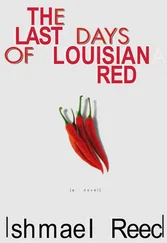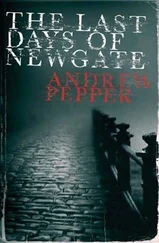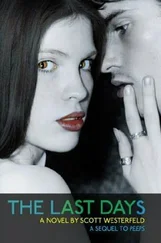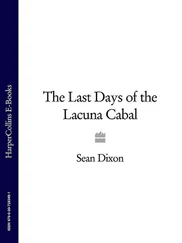Three weeks after my meeting in the hotel, I was in a café in Stepney considering our encounter. I chanced to look up, straight through the storefront, at a man standing outside, looking through the glass at me. That is, I think he was looking at me. I can’t be sure. Food was displayed on shelves in the window, and from where I sat, an apple blocked my view of the man’s face. I could see him beyond it, coated and hatted, unmoving. The apple obscured his eyes, his nose, his mouth. Still, I think he was staring at me.
I drew breath at last and he was gone, too fast for me to ever see his face.
Perhaps some understanding of the nature of the manifs of New Paris, of the source and power of art and manifestation, may be of some help to us, in times to come.
In any case, having been told the story of New Paris, there’s no way I could not tell it.
NOTES
Some Manifs, Details, and their Sources
“It’s the Vélo !”:The bicycle-woman is from Leonora Carrington’s 1941 pen-and-ink work, I am an Amateur of Velocipedes. Though Thibaut was scandalized at the sight, in her drawing, Carrington also depicted a rider on her figureheaded machine.
As everyone gathered watched the black virtue:The phrase “black virtue”— “La Vertu noire” —was my informant’s. Based on this, and on his description of the presence-filled darkness behind the glass, the chaos of colors in the house seems to have been a manif of Roberto Matta’s oil painting of the same name.
There are worse things than garden airplane traps:Around 1935, Max Ernst painted more than one Garden Airplane Trap, landscapes in which vivid, feathery, fungal, anemone-like flowers overgrow broken planes.
Flocks of bat-winged businessmen and ladies:Winged figures are hardly culturally unprecedented, but the particular flying bourgeoisie described seem to me emergent from Ernst’s 1934 collage, Une semaine de bonté: from the Tuesday of that “week of kindness,” its figures cut from catalogues and chimera-ed with draconic wings.
mono- and bi- and triplane geometries:The horrifying colorless aerial shapes that predate like antimatter are from René Magritte’s 1937 painting, Le Drapeau noir. It’s been claimed that the work was inspired by the bombing of Guernica: in the skies of New Paris its manifs seem like remorseless machinic iterations of some Thanatos.
Huge sunflowers root all over:Though he did not explicitly refer to it, there was something in the scale of the sunflowers Thibaut described and the unease with which he described them that makes me suspect the progenitor of these oversized specimens of what Dorothea Tanning called the “most aggressive of flowers” is manifest from her 1943 painting Eine Kleine Nachtmusik, in which a colossal, balefully glowing specimen threatens two girls.
up-thrust snakes that are their stems:These snake-held, eye-and-heart-petaled plants, the Lovers’ Flower, were drawn for André Breton (“quite clumsily,” he gracelessly reports) by “Nadja,” the woman we now know to be Léona Delacourt, and reproduced in his 1928 quasi-novel named for her.
human hands crawl under spiral shells:Dora Maar’s uncanny photo-collage Sans Titre (1934) is the source of the shelled hand manifs. In the war notebooks he showed me, Thibaut describes a fishing village of tents below the Quai d’Auteuil. “People dredge with wire, bring up spiral crustaceans that crawl the wet sand sluggishly on human fingers and thumbs. Painted nails. The locals boil them. They winkle steaming hand-meat from the shells and eat without cannibal shame.”
each shark is hollow-backed, with a canoe seat:In 1929, the Belgian journal Variétés printed the results of several Surrealist games. In “If, When,” one player writes a conditional and another, without looking, a main clause, which are then combined into a new proposition. “If,” Elsie Houston mooted, “tigers could prove how grateful they are to us,” then, the photographer Suzanne Muzard concluded, “sharks would allow themselves to be used as canoes.” As in New Paris, it seems, sharks might sometimes do.
the stumps of its struts, forty storeys up:Just as the Eiffel Tower is the most iconic image of Paris in our own world, so its astoundingly truncated, floating pinnacle is in Thibaut’s. In his Paris and the Surrealists, George Melly remarks of the tower in passing that during one discussion about “embellishing” Paris, “it was proposed that ‘only the top half be left.’” I’ve been unable to find any other mention of this mysterious suggestion, which clearly cleaved with the dynamics of the S-Blast.
an impossible composite of tower and human … a pair of women’s high-heeled feet:The helmeted figure that investigated the young Thibaut appears to be manifest from a 1927 exquisite corpse created by André Breton, Man Ray, Max Morise, and Yves Tanguy.
enervation infecting house after house:I have not found a specific source in Céline’s work for the manif of enervation mentioned. The overall sense described, of course, permeates his work.
Enigmarelle, foppish robot staggered out of an exhibition guide:Enigmarelle was a freakish machine figure with ringletted hair and a vacuous wax smile. The Surrealists were fascinated by the “Man of Steel,” supposedly created by the American inventor Frederick Ireland in 1904, and popular in vaudeville. They promised it would attend their 1938 exhibition (it did not). What was without question a fake in our world appears to have become, in New Paris, real.
The dreaming cat:The bipedal cat is manifest from The Cat’s Dream, an image by Nadja. It’s unclear whether the animal is dangerous, constrained as it is by a weight tied to its right leg, and with its tail tethered by rope to a metal ring that, according to Thibaut, floats constantly behind it and above its head like an unlikely balloon.
sagelands, smoothed alpine topographies like sagging drapes:It took me some time to realize from his description and the areas’ odd name that the “sagelands” are places where geography has come to manifest certain paintings of Kay Sage, with their frozen, twisted, melancholy rippling coils and rock forms.
Under one lamppost, it is night:This isolated outpost of manif night, with its streetlight, seems certainly to be from Magritte’s painting series The Empire of Light (1953–54).
Jacques Hérold set a black chain on fire:It was in May 1944, in our timeline, that the journal Informations surréalistes was published with a cover by Jacques Hérold: a simple, stark image of a flaming chain.
a dream mammal watches him with marmoset eyes:Thibaut made no mention of the source of the image of the clawed beast, and I did not think to try to track it down. But during quite other researches I came across Valentine Hugo’s drawing The Dream of 21 December 1929, of that year, and it was clear that it was from there that the animal was manifest. The image also includes a drowned woman: it’s possible that the prey, as well as the predator that Thibaut disturbed, was manif.
Redon’s leering ten-legged spider: The Smiling Spider, with a gurning, almost chimpanzee-like face, dates from the 1880s, in its original charcoal and later lithograph form. Odilon Redon was one of the Surrealists’ revered recent predecessors, and more than one of his “noirs,” his “black things,” have been sighted in New Paris: Thibaut described to me watching Redon’s great sky-gazing eye-balloon rising sedately over the smoking ruins of a battle between Nazi soldiers and forces of the Groupe Manouchian.
Читать дальше












